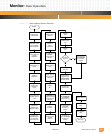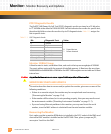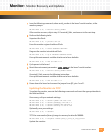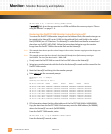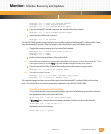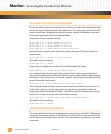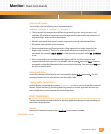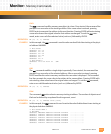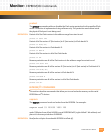
Monitor: Memory Commands
10006757-02 PmPPC7448 User’s Manual
11-11
dhcp
The dhcp command invokes a Dynamic Host Configuration Protocol (DHCP) client to
obtain IP and boot parameters by sending out a DHCP request and waiting for a response
from a server.
DEFINITION:
dhcp [load address] [bootfilename]
rarpboot
The rarpboot command boots an image via a network connection using the RARP/TFTP
protocol. If loadaddress or bootfilename is not specified, the environment variables loadaddr
and bootfile are used as the default.
DEFINITION:
rarpboot [loadAddress] [bootfilename]
tftpboot
The tftpboot command loads an image via a network connection using the TFTP protocol.
The environment variable’s ipaddr and serverip are used as additional parameters to this
command. If loadaddress or bootfilename is not specified, the environment variables
loadaddr and bootfile are used as the default.
The port used is defined by the ethport environment variable. If all is selected for ethport,
the TFTP process will cycle through each port until a connection is found or all ports have
failed.
DEFINITION:
tftpboot [loadAddress] [bootfilename]
MEMORY COMMANDS
The memory commands allow you to manipulate specific regions of memory. For some
memory commands, the data size is determined by the following flags:
DEFINITION: The flag .b is for data in 8-bit bytes.
DEFINITION: The flag .w is for data in 16-bit words.
DEFINITION: The flag .l is for data in 32-bit long words.
These flags are optional arguments and describe the objects on which the command oper-
ates. If you do not specify a flag, memory commands default to 32-bit long words. Numeric
arguments are in hexadecimal.
cmp
The cmp command compares count objects between addr1 and addr2. Any differences are
displayed on the console display.



